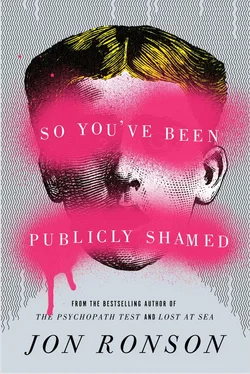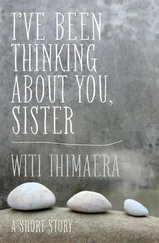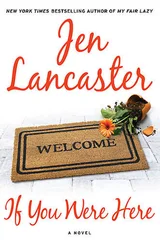“Yes,” the three men agreed in unison.
“And that’s what’s annoying me so much,” I explained. “It’s a misrepresentation of me.”
“You’d like it to be more like you?” Dan said.
“I’d like it to not exist,” I said.
“That’s bizarre,” said Dan. He let out an incredulous whistle. “I find something psychologically interesting about that.”
“Why?” I said.
“I find that quite aggressive,” he said. “You’d like to kill these algorithms? You must feel threatened in some way.” He gave me a concerned look. “We don’t go around generally trying to kill things we find annoying.”
“You’re a TROLL!” I yelled.
—
After the interview was over, I staggered out into the London afternoon. I dreaded uploading the footage onto YouTube because I’d been so screechy. I steeled myself for comments mocking my screechiness and I posted it. I left it up for ten minutes. Then, with apprehension, I had a look.
“This is identity theft,” read the first comment I saw. “They should respect Jon’s personal liberty.”
Wow, I thought, cautiously.
“Somebody should make alternate Twitter accounts of all of those ass clowns and constantly post about their strong desire for child porn,” read the next comment.
I grinned.
“These people are manipulative assholes,” read the third. “Fuck them. Sue them, break them, destroy them. If I could see these people face to face I would say they are fucking pricks.”
I was giddy with joy. I was Braveheart, striding through a field, at first alone, and then it becomes clear that hundreds are marching behind me.
“Vile, disturbing idiots playing with someone else’s life and then laughing at the victim’s hurt and anger,” read the next comment.
I nodded soberly.
“Utter hateful arseholes,” read the next. “These fucked up academics deserve to die painfully. The cunt in the middle is a fucking psychopath.”
I frowned slightly. I hope nobody’s going to actually hurt them, I thought.
“Gas the cunts. Especially middle cunt. And especially left-side bald cunt. And especially quiet cunt. Then piss on their corpses,” read the next comment.
—
I won. Within days, the academics took down @Jon_Ronson. They had been shamed into acquiescence. Their public shaming had been like the button that restores factory settings. Something was out of kilter. The community rallied. The balance was redressed. The academics made a very big meal of eradicating their spambot. They wrote a Guardian column explaining that their wider aim was to highlight the tyranny of Wall Street algorithms: “It’s not just Ronson who has bots manipulating his life. It’s all of us.” I still didn’t understand why pretending I eat wasabi dumplings might draw the public’s attention to the scourge of Wall Street algorithms.
—
“I have been asked to retire you — do you understand what that means,” tweeted David Bausola to the spambot. And, “You have a few hours left. I hope you enjoy them.”
“Just press the off switch,” I e-mailed him. I tapped my fingers on my desk, impatiently. “Jesus.”
I was happy to be victorious. It felt wonderful. The wonderful feeling overwhelmed me like a sedative. Strangers all over the world had united to tell me I was right. It was the perfect ending.
—
Now I thought back on the other recent social media shamings I’d enjoyed and felt proud of. The first great one happened in October 2009. The Boyzone singer Stephen Gately had been found dead while on holiday with his civil partner, Andrew Cowles. The coroner recorded a verdict of natural causes, but the columnist Jan Moir wrote in the Daily Mail , “Whatever the cause of death is, it is not, by any yardstick, a natural one… it strikes another blow to the happy-ever-after myth of civil partnerships.”
On Twitter we knew what it meant to be the underdog. And here was a member of Britain’s elite trying to reshame the gay community and choosing the most callous circumstance to do it. We were not going to tolerate a resurgence of old-time bigotry, and as a result of our collective fury, Marks & Spencer and Nestlé demanded their advertising be removed from the Daily Mail ’s website. These were great times. We hurt the Mail with a weapon they didn’t understand — a social media shaming.
After that, when the powerful transgressed, we were there. When the Daily Mail mocked a food-bank charity for giving a food parcel to their undercover reporter without running an ID check on him, Twitter responded by donating £39,000 to the charity by the end of that same day.
“This is the nice thing about social media,” one tweeter wrote about that campaign. “The Mail , which relies primarily on lying to people about their neighbors, can’t cope with people communicating among themselves, forming their own opinions.”
When LA Fitness refused to cancel the gym membership of a couple who had lost their jobs and couldn’t afford the fees, we rallied. LA Fitness hurriedly backed down. These giants were being brought down by people who used to be powerless — bloggers, anyone with a social media account. And the weapon that was felling them was a new one: online shaming.
And then one day it hit me. Something of real consequence was happening. We were at the start of a great renaissance of public shaming. After a lull of almost 180 years (public punishments were phased out in 1837 in the United Kingdom and in 1839 in the United States), it was back in a big way. When we deployed shame, we were utilizing an immensely powerful tool. It was coercive, borderless, and increasing in speed and influence. Hierarchies were being leveled out. The silenced were getting a voice. It was like the democratization of justice. And so I made a decision. The next time a great modern shaming unfolded against some significant wrongdoer — the next time citizen justice prevailed in a dramatic and righteous way — I would leap into the middle of it. I’d investigate it close up and chronicle how efficient it was in righting wrongs.
—
I didn’t have to wait long. @Jon_Ronson was put to death on April 2, 2012. Just twelve weeks later, in the middle of the night on July 4, a man lying on his sofa in Fort Greene, Brooklyn, was looking for ideas for his blog when he made a very unexpected discovery.
Two.I’m Glad I’m Not That
In the middle of the night on July 4, 2012, Michael C. Moynihan lay on his sofa. His wife, Joanne, was asleep upstairs with their young daughter. They were broke, as they always were. Everybody seemed to make more money in journalism than Michael did. “I can never turn it into money,” he’d later tell me. “I don’t know how to do it.”
These were anxious times. He was thirty-seven and scraping by as a blogger and a freelancer in a walk-up in a not-great part of Fort Greene, Brooklyn.
But he’d just had a job offer. The Washington Post had invited him to blog for ten days. Not that the timing was so great: “It was July Fourth. Everyone was on vacation. There were no readers and there wasn’t a lot of news.” But still, it was a break. And it was stressing Michael out. The stress had just spoiled a vacation in Ireland visiting his wife’s family, and now it was stressing him out on his sofa.
—
He began hunting around for story ideas. On a whim he downloaded the latest number-one New York Times nonfiction bestseller from the young, handsome, and internationally renowned pop-psychology author Jonah Lehrer. It was a book about the neurology of creativity and was called Imagine: How Creativity Works .
Читать дальше












